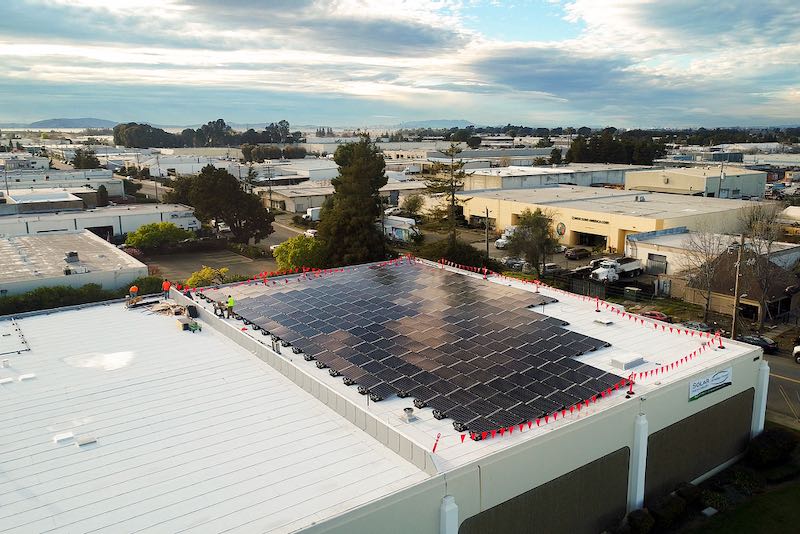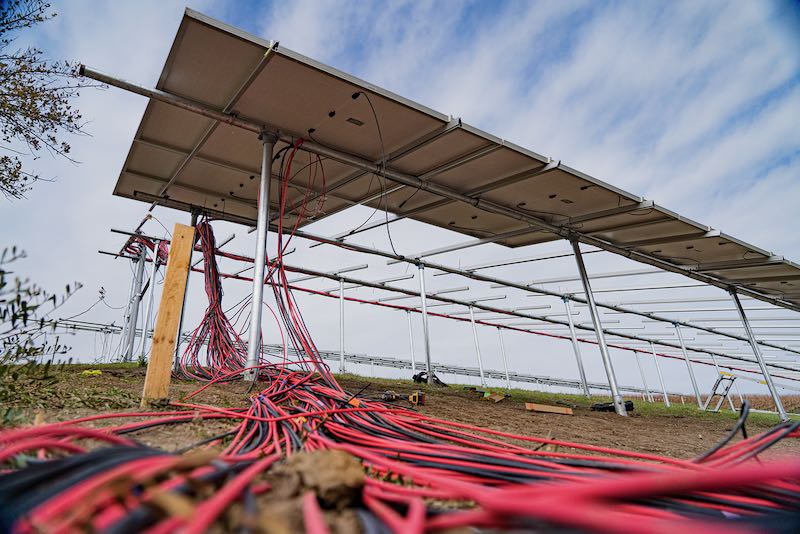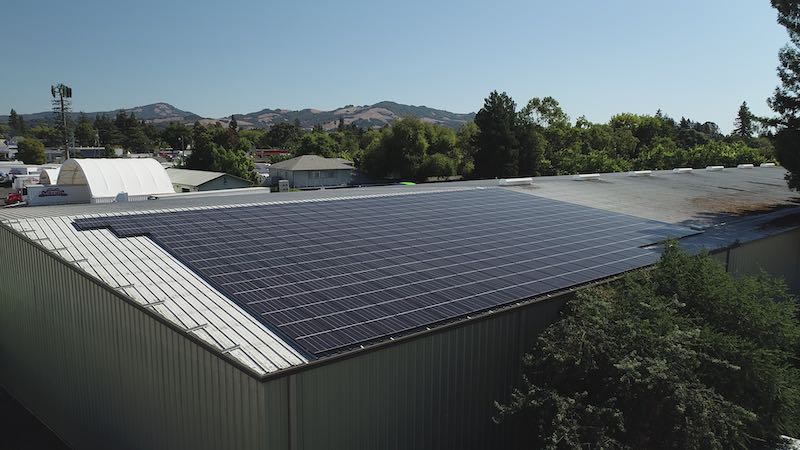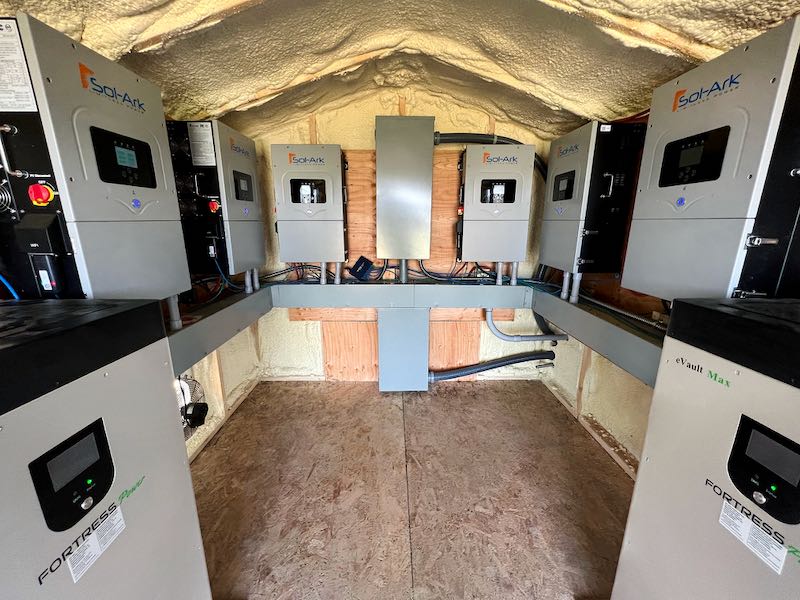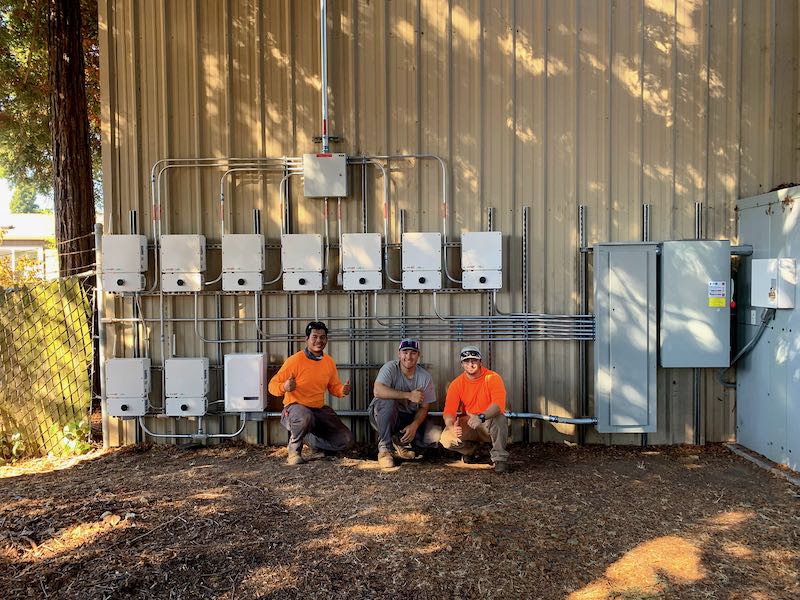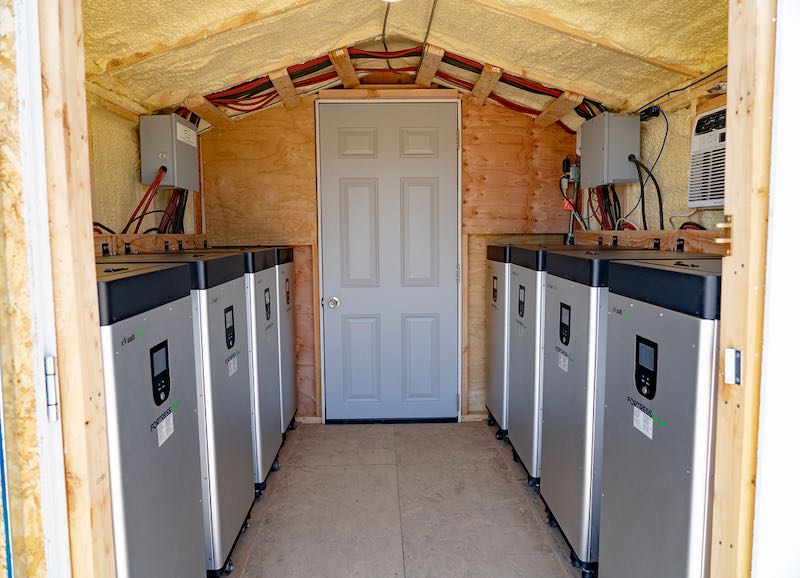Solar energy is no longer a novelty. It’s a viable solution for businesses seeking to reduce their carbon footprint and energy costs.
Commercial pv installations offer a path to sustainability. They provide a way to harness the sun’s power for daily operations.
But how does a business transition to solar energy?
This commercial solar guide is designed to answer that question. It provides a roadmap for planning, purchasing, and installing commercial solar systems.
The guide emphasizes the unique benefits and considerations of commercial solar. It covers everything from assessing energy needs to selecting the right solar technology.
It also delves into financial models, tax credits, and calculating return on investment.
By the end of this guide, you’ll have a comprehensive understanding of commercial solar implementation. You’ll be equipped to make informed decisions for your business’s energy future.
Let’s embark on this journey towards a sustainable, solar-powered future for your business. This commercial solar buying guide will provide you with all the information needed to get started. Additionally, you will want to read this post on the 5 steps to take to switch to solar at your business.
1. Understand the Basics of Commercial Solar Energy
Commercial solar energy involves installing photovoltaic (PV) systems to generate electricity. These systems capture sunlight and convert it into usable energy for business operations.
The transition to solar energy not only aligns with sustainable practices but also offers significant cost savings. Commercial solar installations can lead to reduced utility bills and energy independence.
Understanding the fundamental components is crucial. Solar panels, inverters, and mounting systems are core to any installation. Together, they form the backbone of an effective solar energy system. By grasping these basics, businesses can start their solar journey with confidence.
The Environmental and Financial Benefits of Commercial Solar
Switching to commercial solar brings benefits. These advantages are both environmental and financial, reinforcing the appeal of solar energy.
Firstly, solar power significantly reduces greenhouse gas emissions. This helps businesses minimize their carbon footprint while supporting global climate initiatives. Additionally, solar energy contributes to cleaner air and a healthier planet.
Companies can reduce costs on energy expenses. Commercial solar systems often lead to substantial reductions in energy costs over time. The long-term savings can be quite significant, adding to the financial allure of solar energy.
Here are some key benefits of commercial solar:
- Reduction in energy costs
- Protection against fluctuating utility prices
- Potential increase in property value
Moreover, solar energy provides a safeguard against rising utility costs. Businesses can lock in energy prices through solar power, offering budget predictability. This stability is invaluable in fluctuating energy markets.
Types of Commercial Solar Installations
Commercial solar installations vary in type and application. They can be tailored to fit the needs and circumstances of different businesses.
Rooftop solar systems are among the most common. They optimize unused space on commercial buildings, transforming rooftops into energy-producing assets.
Ground-mounted systems are another viable option, suitable for businesses with ample land. These installations allow for scalability and ease of maintenance. They can also be oriented to maximize energy capture efficiently.
Carport solar installations provide a unique dual benefit. Besides generating energy, they offer covered parking spaces, enhancing property amenities. These versatile installation types cater to diverse business needs, making solar an adaptable choice.
2. Plan Your Commercial Solar Project
Effective planning is critical for successful commercial solar installations. It begins with a clear understanding of project goals and objectives. Identifying these early helps shape the entire process.
Involving stakeholders from the outset ensures alignment with organizational priorities. Their input is valuable in establishing realistic expectations and timelines. This collaborative approach fosters a sense of ownership and commitment.
Consider potential challenges that may arise. These could include regulatory hurdles, site limitations, and financing concerns. Addressing these issues proactively sets a strong foundation for the project’s success.
Assessing Your Energy Needs
Understanding your energy consumption is key to designing an effective solar solution. Begin by analyzing your current electricity usage patterns. This involves examining utility bills and identifying peak demand periods.
Keep these factors in mind while assessing your energy needs:
- Total energy consumption in kilowatt-hours
- Variations in usage throughout the year
- Future growth or expansion plans
Forecasting future energy needs is equally important. Consider potential increases in energy consumption due to expansion or new technology. This foresight ensures the solar system meets both present and future demands.
Accurate energy assessment forms the blueprint for a tailored solar solution. It guides the size and scale of the system, maximizing its efficiency and effectiveness.
Site Assessment for Solar Viability
A comprehensive site assessment determines if your location is suitable for solar installations. Assessing roof conditions, such as angle, material, and structural integrity, is crucial. These factors impact both the feasibility and efficiency of a solar system.
Space availability is another critical element. Sufficient open area is needed for panels to capture optimal sunlight. Obstructions like trees, buildings, and other structures can reduce sunlight exposure.
Shading analysis is essential in this process. Minimizing shading ensures maximal energy generation and system performance. Assessing these site-specific variables helps in choosing the best solar solution. This thorough evaluation facilitates a smooth path to implementation.
Choosing the Right Solar Technology
Selecting the right technology is vital for commercial solar installations. The choice depends on your specific energy goals and site constraints. Explore various options, such as monocrystalline, polycrystalline, and thin-film panels, each with unique features.
Inverters also play a crucial role. They convert direct current (DC) from panels into alternating current (AC) for use. Different inverter types, like string inverters and microinverters, cater to various needs.
Take into account the latest advancements in solar technology. Innovations like bifacial panels and high-efficiency inverters offer enhanced performance. Staying informed about these technologies can lead to more effective and future-proof installations.
3. Financial Considerations for Commercial Solar
Evaluating financial aspects is critical for any commercial solar project. The upfront costs can be substantial, but the long-term savings often justify the investment. Analyzing these factors provides a clearer picture of financial viability. Some choose to finance their solar install.
Understanding cash flow implications is also necessary. Align your solar investment with your business’s financial goals. This includes assessing savings on energy bills and potential income from surplus energy.
Consider the impact of solar on your business’s bottom line. Solar installations can lead to significant energy cost reductions. Moreover, predictable energy pricing helps buffer against utility rate fluctuations, enhancing financial stability.
Understanding Solar Investment Models
There are multiple solar investment models to explore. Each offers distinct financial arrangements, suited to different business needs. Familiarize yourself with options like outright purchases, leases, and Power Purchase Agreements (PPAs).
Outright purchases require significant upfront investment but offer full ownership benefits. Leasing, on the other hand, involves lower initial costs with predefined payments over time. PPAs allow you to buy energy at a fixed rate, often with no upfront cost.
Analyzing these models lets you align solar investments with financial capabilities and objectives. Evaluating the pros and cons of each ensures a tailored approach, maximizing financial return and operational flexibility.
Exploring Tax Credits, Rebates, and Incentives
A key advantage of commercial solar projects is access to various financial incentives. These can significantly enhance the project’s affordability and appeal. Understanding and leveraging these incentives is essential for optimizing project finances.
Common incentives include:
- Federal Investment Tax Credit (ITC) for solar installations
- State-specific rebates and grants
- Accelerated depreciation benefits
These financial aids reduce upfront costs and improve ROI significantly. They also help in offsetting expenses, making solar projects more attractive to businesses looking to invest in sustainability. Read about the top solar incentives and tax credits here.
Calculating ROI and Payback Period
Calculating return on investment (ROI) is pivotal in assessing the value of your solar project. This involves determining the total savings and benefits over the system’s lifespan. Analyze financial gains against installation and maintenance costs.
Payback period is a crucial metric as well. It indicates the time taken to recoup the initial investment. A shorter payback period increases the project’s financial desirability and feasibility.
A thorough financial analysis ensures realistic expectations of solar benefits. This helps in crafting a compelling case for solar investment, demonstrating both environmental and economic gains to stakeholders.
4. Selecting a Commercial Solar Provider
Choosing the right commercial solar installer is a critical decision in your solar journey. A reputable provider ensures quality installation and reliable service. Investigate providers’ track records and experience in commercial projects.
Assessing a provider’s financial stability is equally important. A stable provider is more likely to honor warranties and service agreements. This guarantees long-term support and system performance.
Additionally, consider the provider’s customer service and support framework. Excellent support can be invaluable during installation and beyond, ensuring a smooth process and addressing concerns promptly.
Evaluating Solar Contractors and Proposals
Evaluating solar contractors requires careful attention to detail. Start by checking their credentials and industry certifications. A qualified contractor will meet industry standards and possess the necessary expertise.
Examine proposals thoroughly for scope, cost, and expected outcomes. Detailed proposals should specify system components, timelines, and cost breakdowns. Transparent proposals facilitate informed decision-making.
Don’t hesitate to ask for references or case studies. Past projects offer insights into a contractor’s ability to deliver on promises. Client testimonials and successful installations are strong indicators of reliability.
The Importance of a Detailed Contract
A detailed contract is essential for setting clear expectations between parties. It should outline all terms, responsibilities, and deliverables. This clarity prevents misunderstandings and protects both your interests and the provider’s.
Ensure that the contract includes warranties and service agreements. These should cover both equipment and labor. A well-structured contract ensures peace of mind and confidence in your solar investment.
Finally, review the contract for termination clauses and liabilities. Understand the conditions under which the contract can be canceled. Clearly defined terms and conditions reduce risks and ensure a fair agreement.
5. Installation and Implementation of Commercial Solar
Implementing commercial solar requires meticulous planning and skilled execution. This stage involves actualizing the designs and plans developed earlier. Both timing and precision are crucial to ensure project success.
Coordinating with various teams is essential during installation. Electricians, engineers, general contractors and project managers need to work together seamlessly. Effective communication can prevent delays and mitigate any on-site challenges.
As the installation progresses, ensure all safety protocols are strictly followed. Safety is paramount not only for workers but also for the integrity of the system. Adhering to safety standards safeguards both people and investments.
Obtaining Permits and Understanding Regulations
Securing the necessary permits is a vital step in the solar installation process. Regulations can vary significantly between locations, affecting timelines and costs. Familiarize yourself with local requirements early to avoid surprises.
Consider leveraging the expertise of your solar provider to navigate the permitting process. Experienced providers typically understand regulatory landscapes well. Their involvement can expedite approvals and ensure compliance with local laws.
Understanding zoning laws and building codes is also crucial. These regulations can influence installation parameters, like positioning and system size. Being proactive about these requirements helps align your solar project with legal standards.
The Interconnection Process with Utility Grid
Connecting your solar system to the utility grid is another essential phase. This process allows you to feed excess electricity into the grid. A seamless interconnection maximizes the benefits of your solar installation.
Engage with your utility company early to understand their specific requirements. Every utility has its own interconnection policies. Gathering this information at the outset can streamline the approval process.
Ensure all technical specifications and standards are met before grid connection. Any deviations can lead to delays or even rejection. Working closely with your installer can address these technical aspects efficiently.
Addressing Shading and Orientation Issues
Shading and orientation can significantly impact solar performance. Identifying potential shading sources is essential during the planning phase. Trees, buildings, and other obstructions can reduce system efficiency.
To optimize sunlight exposure, consider the orientation and tilt of solar panels. Ideally, panels should face south in the northern hemisphere for maximum output. Minor adjustments can lead to substantial increases in energy capture.
Utilize technology like solar pathfinders to predict shadow patterns. Advanced tools offer insights into how sunlight will interact with your site. Understanding these dynamics allows for strategic planning and enhances energy production.
6. Post-Installation: Operations and Maintenance
Once your commercial solar system is up and running, ongoing operations and maintenance are key. Ensuring the system operates smoothly can enhance its longevity and efficiency. A well-maintained system delivers better performance and maximizes return on investment.
Regular inspections are essential to identify and address any potential issues early. Periodic checks can detect minor problems before they escalate. This proactive approach helps avoid costly repairs and downtime.
Additionally, maintaining clear communication with your solar provider can be beneficial. Providers often offer service agreements that include maintenance. Leveraging their expertise ensures your system remains in optimal condition.
Monitoring System Performance
Effective monitoring of your solar system’s performance is crucial. By keeping a close eye on energy production, you can detect inefficiencies. Advanced monitoring systems provide real-time data on operational status.
Monitoring helps in identifying patterns or anomalies in energy generation. If production drops unexpectedly, it signals a need for investigation. Early detection through monitoring can prevent prolonged losses in output.
Employing digital tools and dashboards simplifies tracking performance metrics. These platforms provide insights into energy trends and system health. Regularly reviewing this data ensures your installation performs at its best.
Maintenance and Troubleshooting
Routine maintenance is vital to sustaining high solar panel performance. Cleaning panels regularly can significantly impact efficiency. Dust, debris, and bird droppings can obstruct sunlight and reduce output.
Troubleshooting is important when unexpected issues arise. Quick resolution of technical problems prevents extensive downtime. Having a set maintenance schedule reduces the likelihood of major system failures.
Engaging professionals for maintenance ensures thorough attention to detail. They possess the skills and tools necessary for effective system care. Utilizing expert services guarantees that minor issues do not escalate.
The Role of Energy Efficiency and Storage Solutions
Energy efficiency plays a substantial role post-installation. Implementing energy-saving measures complements solar energy use. Efficiency improvements reduce overall energy demand and enhance sustainability.
Energy storage solutions provide additional benefits to a solar system. Batteries store excess energy for use during non-sunny periods. This capability allows businesses to use solar power consistently.
Incorporating storage solutions enhances energy security and resilience. It also reduces reliance on grid power, potentially lowering costs. Investing in efficient appliances and energy management systems further optimizes usage.
7. Communicating Your Solar Commitment
Effectively communicating your solar commitment is essential for maximizing its impact. When businesses invest in solar energy, it’s important to share this decision. Transparent communication can enhance both internal and external perceptions.
Firstly, inform your employees about the solar project. They are key stakeholders who can advocate for the company’s green initiatives. Regular updates throughout the process keep them engaged and informed.
Externally, consider sharing your solar journey with customers and the community. Highlight the environmental benefits and energy savings achieved. This transparency builds trust and showcases your commitment to sustainability.
Engaging Stakeholders and the Public
Engaging stakeholders and the public in your solar initiatives is vital. Host informational sessions or tours to showcase your solar installations. These activities can be powerful for educating and engaging diverse audiences.
Creating informative content, such as blog posts or social media updates, can also be effective. Share insights into your solar project’s milestones and successes. This approach fosters a sense of involvement and excitement around your efforts.
Furthermore, collaborating with local organizations and industry groups amplifies your message. Partnering with environmental groups or schools can enhance community impact. These partnerships often lead to broader engagement and support.
Solar Energy and Corporate Social Responsibility
Integrating solar energy into your corporate social responsibility (CSR) strategy strengthens your brand’s image. Solar investments reflect a commitment to environmental stewardship. This alignment enhances your company’s sustainability credentials.
Incorporating solar into CSR initiatives can create positive ripple effects. It often leads to improved employee morale and customer loyalty. People appreciate organizations that prioritize the planet’s well-being.
Communicate the alignment of your solar projects with broader CSR goals. Highlight how these efforts contribute to reducing carbon footprints. This transparency bolsters your reputation as a responsible corporate citizen.
8. Conclusion and Next Steps
Embarking on a commercial solar project is a significant decision. This investment offers substantial financial and environmental benefits. It’s crucial to approach the process with a well-thought-out plan.
To ensure success, follow the outlined steps meticulously. Each stage, from initial assessment to final implementation, requires careful consideration. Engaging professional expertise can streamline these processes.
As you finalize your solar journey, prepare to celebrate your accomplishments. Recognition of this green initiative can boost morale and public image. Stay committed to monitoring and maintaining your system for long-term benefits.
Creating a Solar Project Timeline and Checklist
Creating a detailed timeline and checklist is key to managing your solar project efficiently. Begin with setting realistic milestones for each phase. This roadmap will guide you through planning, execution, and beyond.
Consider including critical tasks like selecting contractors and securing permits. Identify dependencies and account for potential delays. This proactive approach ensures smooth project progression.
Regularly update your checklist to reflect current status and next steps. Use this tool to communicate with stakeholders and keep everyone aligned. A well-organized timeline is crucial for staying on track and avoiding oversights.
Staying Informed and Adapting to Changes
The solar industry is dynamic, with frequent advancements and policy shifts. Staying informed is essential to maximizing your investment. Engage with industry resources to keep up with the latest trends and technologies.
Attend solar workshops, webinars, and conferences to broaden your knowledge. Networking with industry professionals can provide valuable insights. This awareness helps you adapt to changes and refine your solar strategy.
Remain flexible in adjusting your plans as needed. Being agile allows you to optimize efficiency and benefit from new opportunities. Continuous learning and adaptation ensure your solar project remains successful and resilient.
Leveraging Solar for Long-Term Business Success
Solar energy can be a catalyst for long-term business success. This sustainable investment reduces energy costs and enhances your corporate image. Positioning your company as a green leader in your industry pays dividends.
Highlight your solar achievements in marketing and branding efforts. Share success stories to inspire confidence and loyalty among customers and partners. Your dedication to sustainability can set your business apart.
Additionally, use the savings from reduced energy expenses to reinvest in growth. Explore opportunities to expand solar capacity or integrate other renewable technologies. Leveraging solar leads to financial, environmental, and competitive benefits.
Ready to get started with your commercial solar project? We can help! Contact us and we will guide you through the process and provide a free quote.


